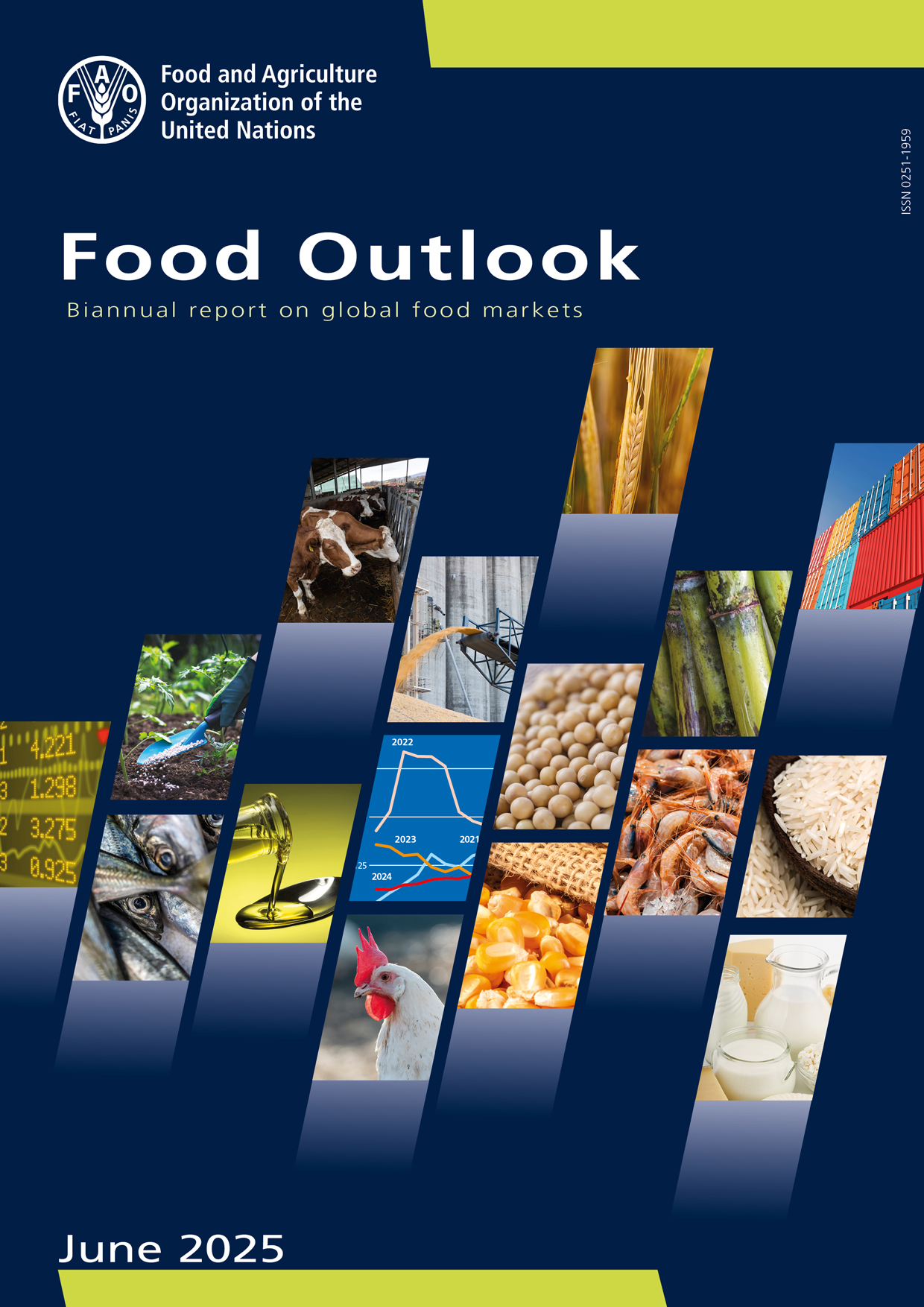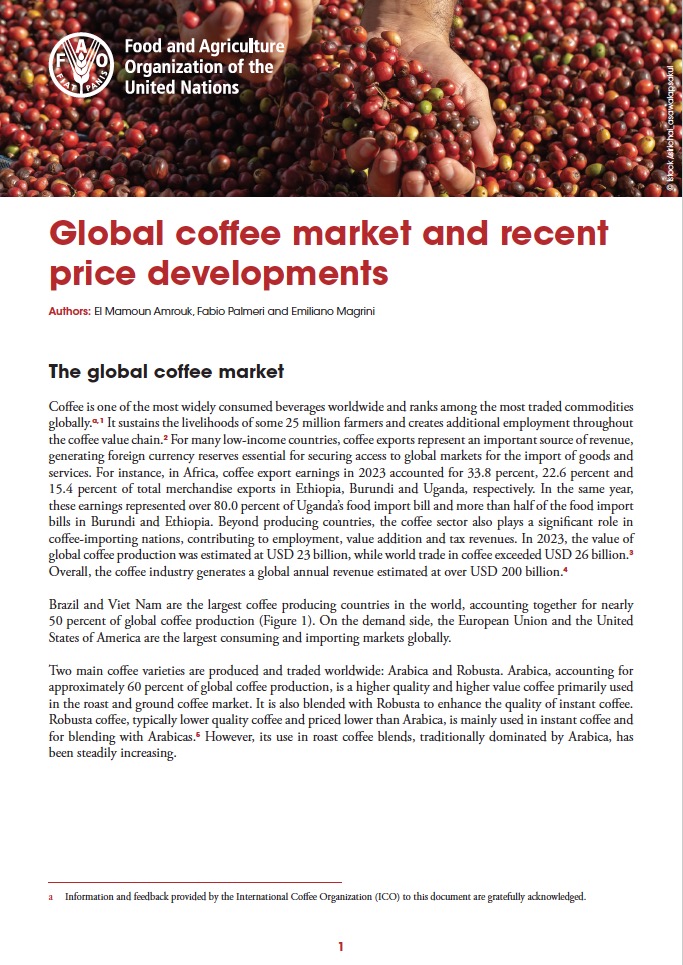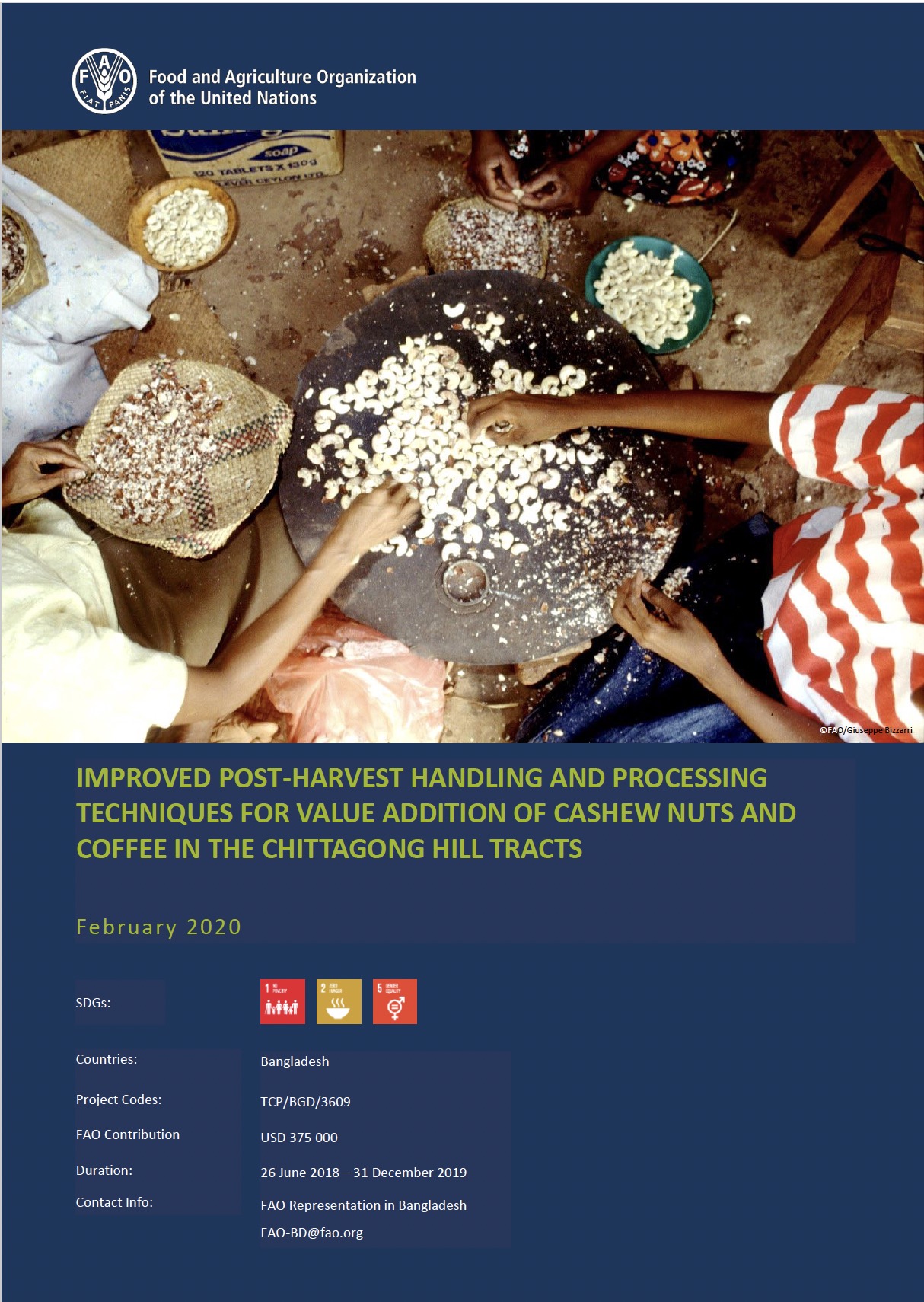Goodness in a cup
Coffee is the most widely traded tropical product, with up to 25 million farming households globally accounting for 80 percent of world output. Production is concentrated in developing countries, where coffee accounts for a sizeable share of export earnings, and provides a key source of livelihood for households.
Commodity in focus
Coffee is one of the most widely consumed beverages in the world and one of the most globally traded commodities. The largest coffee producing countries are Brazil, Viet Nam and Colombia, while the European Union and the United States of America are the largest consuming and importing markets. Coffee is a growing market due in part to increasing consumption in emerging economies and a stronger interest in specialty coffee and product innovations in developed countries. Despite the expansion of the sector, recurrent and detrimental market imbalances and asymmetric income distribution among market players can threaten the livelihood of millions of smallholder producers.
Publications

Food Outlook – Biannual report on global food markets – June 2025
12/06/2025
FAO’s latest assessments indicate a relatively optimistic outlook for food commodity markets, with production and trade of all commodities, except sugar, anticipated to increase. However, this growth will have different impacts on stock recovery, influenced by the delicate balance between supply and demand. Global food commodity production remains vulnerable to weather conditions.

Global coffee market and recent price developments
14/03/2025
Coffee is one of the most widely consumed beverages worldwide and ranks among the most traded commodities globally. It sustains the livelihoods of some 25 million farmers and creates additional employment throughout the coffee value chain. For many low-income countries, coffee exports represent an important source of revenue, generating foreign currency reserves essential for securing access to global markets for the import of goods and services.

Improved Post-Harvest Handling and Processing Techniques for Value Addition of Cashew Nuts and Coffee in the Chittagong Hill Tracts - TCP/BGD/3609
01/02/2020
Processing and value chain development of vegetables, fruits, fish and livestock products using appropriate technologies promoted through introduction of farmers group marketing practices.
Among the tropical beverages – coffee, cocoa and tea – trade in coffee makes up the largest part of the world's market and has grown rapidly since 2000. | |
The bulk of coffee production takes place in the southern hemisphere, while consumption occurs mostly in the northern hemisphere. | |
Coffee is exported at an early stage of the value chain, which means there is little value added in the producing countries. | |
Coffee can contribute to the achievement of the Sustainable Development Goals (SDGs) by generating income, creating rural employment and alleviating poverty. | |
| Coffee culture is growing rapidly throughout the world, with consumption expanding in importing and exporting countries. | |
| Coffee production is witnessing an increasing trend in the application of Climate Smart Agriculture (CSA) strategies. | |
| Interest in traceability and transparency is growing among consumers in line with their attention to product quality and origin. |
| Coffee production is concentrated in countries with relatively low
income levels and accounts for a sizeable share of their export
earnings. |
| The coffee market is characterized by recurrent supply-demand imbalances
and asymmetric income distribution among actors in the value chain. |
| Key elements of uncertainty for the development of the coffee industry are the economic sustainability of bean production and the effects of climate change. |
| Innovation and new technologies are crucial for the sector to become more productive and competitive in the beverages industry. |
